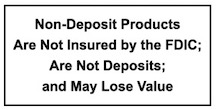Whether you’re ready to start saving money for a down payment on a new home, a tropical getaway or you’re planning for retirement; we’ve got 13 practical solutions to get you started. By changing a few daily behaviors, decreasing monthly costs, and utilizing tools to help automate savings, you can score some significant savings.
Automatic Transfers
Setting up monthly automatic transfers from your checking account to your savings account will allow you to save money without having to do any extra work. This method is especially effective when you have specific goals in mind. It’s exciting to watch your savings grow and your goals become reality.
Bank your Coin
Another alternative is to manually save your change by setting it aside each night. Remember piggy banks? Once you have a substantial sum, you can put it immediately into your savings account and watch it grow. In fact, using cash rather than credit cards when you want to keep track of your spending is a good idea because parting with tangible money might be difficult. While this plan may not result in immediate savings, it is a sound strategy for gradual savings accumulation.
Plan your Meals
A little preparation before going to the grocery store can help you save a lot of money on food. To prevent buying anything you don’t need, check your cupboards and establish a shopping list. To optimize your savings while shopping, learn how to get discounts and join reward programs. Your local store’s loyalty program may provide additional savings in exchange for revealing your phone number or email address. And, if it’s available in your area, order your groceries online and opt for pick-up. You’ll be less tempted by impulse purchases and you might even save some time as well!
Purchase a Generic
Giving up name brands is one of the most straightforward methods to save money. In most situations, brand-name products are only better because of their marketing. Generic medicines, staple foods (such as rice and beans), cleaning supplies, and paper goods are much less expensive than their brand-name counterparts, and they work just as well.
Eat Out Less
Restaurant meals are one of the easiest expenses to cut when you want to save money because eating out is more expensive than cooking at home. If you insist on eating out, attempt to limit your visits and take use of credit cards that reward restaurant spending. You can also save money by skipping fancy drinks and desserts.
DIY Gifts
Save money with inexpensive present options like herb gardens and books. Baking cookies, producing art, or cooking a meal for someone shows that you care just as much, if not more, than buying something expensive. You can also give the gift of your time by offering to take someone to a nearby (free) museum or other event.
Avoid Going to the Coffee Shop
Ouch. We get it. However, rather than spending $5 on a daily latte, you can save money by preparing your own coffee at home. Listen, we’re not advocating that you solely drink instant coffee (unless you prefer it). However, buying a bag of local beans and brewing it at home will save you a lot of money in the long run. Maybe try a new at home method, like French Press which is usually regarded as the best and easiest way to make consistently good coffee.
Reduce Car Expenses
Refinancing your car loan to take advantage of reduced interest rates might save you a lot of money over the life of the loan. When compared to merely letting your current policy renew on its own, shopping around for vehicle insurance on a regular basis can help you save money. Driving less, eliminating heavy objects from your trunk, and avoiding needless quick acceleration can all help you save money on car maintenance.
Combine Cable and Internet
Depending on your provider, combining your cable and internet service might save you more than $1,000 over the course of two years. Cutting cable, or at least some of your other streaming services or premium subscriptions, is another option to explore.
Cancel Memberships
You probably have many subscriptions, such as Netflix, Hulu, Spotify, gym memberships, trendy subscription boxes, and Amazon Prime. Any subscriptions you don’t utilize on a regular basis should be cancelled or switched off of auto-renew. If you cancel it and realize you can’t live without it, you may re-subscribe, but only if it fits into your cool, new budget.
Try a Spending Freeze
For a week—or maybe a month—don’t buy anything unnecessary. Consider it a challenge. Take note of things you’re grateful for each day while you’re at it. Make your spending freeze work by making meals using what you already have on hand, avoiding locations where you’re prone to impulsive purchases. #Target. Remember, it only takes about 21 days to form a new habit.
Use Coupons and Cash Back Apps
When it comes to saving money, nothing beats a good, old-fashioned 20% off coupon. But did you know that there are numerous cash back apps available to help you stretch your funds even further? Ibotta, Rakuten, and Honey are all worth checking out.
Get Rid of Everything that Doesn’t Make you Happy
Declutter the items in your home that you don’t need and are prepared to part with in order to save money. What about the antique chair your aunt gave you? Sell it. That crystal vase collecting dust in the cupboard? Sell it. You’d be shocked at how much junk (that you don’t even use or think about) you have in your home. And the money you can generate from those items could be the difference between living paycheck to paycheck or not.

